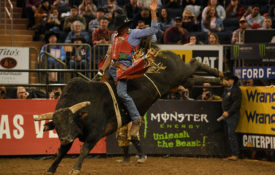Every college athlete’s name, image and likeness (NIL) has value – as athletes build their brands and business.
I delved into the student-athlete NIL space to analyze state law and institutional policies, and spoke to key compliance leads within six institutions along with over 40 leaders in this space.
I learned that the lack of uniformity across educational intuitions statewide as a result of the varying state laws is creating an uneven playing field for athletes across institutions. Vast differences in resources, tools, and approaches made available to student-athletes is impacting the college recruiting landscape. The patchwork of state laws makes it more difficult for athletes to navigate the landscape, creating inconsistency and confusion, especially with recruits who are evaluating a handful of institutions. Factors including athlete education, institutional interests, and compensation propelled the NIL era forward—showing the importance and need for institutional flexibility in state laws for student-athletes to maximize and access the best possible NIL opportunities.
A Closer Look at Two States
When looking across the California school policies, including those at UCLA, USC, Stanford, and UC Berkeley, institutional marks, time restrictions as it pertains to team activities and disclosure, institutional sponsorship conflicts, and prohibited categories all have different guidelines. NIL institutional programs and educational offerings vary widely, whether tied to third-party portals and marketplaces connecting athletes with brands, institutional partnerships with aligned business and law schools, internal and external partnerships, licensee partners, or network platforms. When analyzing Illinois institutional policies there are more restrictive restraints, including the seven-day requirement to disclose deals along with detailed category conflicts.
Less permissive jurisdiction is more advantageous for students to make deals. Having a more flexible state law that allows for institutions to set policy is in the athletes’ best interests, but without national legislation or the NCAA stepping in to provide transparency, this decentralized system will continue to result in chaos and jeopardize the collegiate sports model.
Across six institutions—UCLA, USC, UC Berkeley, University of Illinois, and Northwestern—only four common categories exist: the ability to earn compensation, inducement prohibitions, institutional involvement in the facilitation of deals, and third-party representation. Even within the same state, institutions have very different policies; in California the only additional common policy is around institutional conflicts around sponsorship, whereas Illinois does not include this in its state law.

Image source: Shutterstock
A decentralized system across states and schools creates imbalances across institutional resources, programs, and overall NIL support, even within the same state. The lack of cohesion across states and schools affects the marketplace and athletes’ earning potential and ability to maximize NIL opportunities. With the NCAA setting a hands-off approach to NIL, chaos ensued, and states entered a regulatory void.
The question that comes into play is how much control institutions should hold versus state law—and what is that perfect balance so that students can maximize their NIL potential earnings. Is it no state law in general, or a flexible state law, empowering institutions to set policy? Something has to change.
Hours of research on institutional websites to navigate programs, resources, and policies showed the challenges, as not all information was easily found from NIL school policy.
National Action Is Needed
In early May, the Division I Board of Directors issued guidance to the schools around recruiting aimed to clarify booster and collective involvement as well as types of contracts that could be considered as improper inducements and pay-to-play. It also reiterated that boosters can’t reach out to recruits and that NCAA enforcement can investigate previous deals if warranted. In an NCAA statement last month, Jere Morehead, board chair and Georgia president states:
The new guidance establishes a common set of expectations for the Division I institutions moving forward, and the board expects all Division I institutions to follow our recruiting rules and operate within these reasonable expectations.
Additionally, in the past week, NCAA enforcement visited University of Miami and interviewed UM booster John Ruiz with what is one of the first inquiries into a college athletic department. News of the inquiry was first reported Tuesday on Sports Illustrated. The NCAA provides more detail:
The Division I Board of Directors on Monday issued guidance to schools regarding the intersection between recruiting activities and the name, image and likeness environment. Board members emphasized a continued support for the ability of student-athletes to benefit from their name, image and likeness. The guidance is intended to provide clarity for those engaging in a rapidly evolving NIL environment, acknowledging that the environment will continue to evolve, and ongoing attention will be needed to ensure student-athletes are able to benefit from these opportunities.
Over the past four months, we’ve seen an uptick of state laws being amended and repealed, over a handful of states allowing for high school students to benefit on NIL, and the rise of the collectives flipping the recruiting model on its head. In May, Illinois amended its NIL law and now allows universities to help arrange compensation and publicity opportunities for student-athletes – joining the states with lifted facilitation restrictions including Florida, Alabama, Louisiana, Mississippi, South Carolina, Kentucky and Tennessee.
Questions arise:
- How should NIL be regulated to ensure all students are disclosing and compliant with deal submissions?
- What happens to the traditional collegiate sponsorship model with NIL used as a recruitment tool?
- How do schools look to continue evolving with having a competitive advantage, providing unique opportunities for their student-athletes?
- Is there a carve-out that could go to student-athletes?
- Will the conferences step in to enforce new rules?
With so many questions left unresolved and the changing landscape, it seems we are chasing and searching for information that needs to be addressed with immediate solutions from a trusted source with a systematic approach. As we celebrate the 50th anniversary of Title IX this year, what is it going to take to prioritize this issue nationally? With key legal matters on the near horizon—from House v. NCAA to be determined in the coming year to the NLRB advancing its investigations tied to NCPA’s push for gaining employee status for football and basketball players and separately high school football recruits signing $8 million NIL deals—it’s just a matter of time before these matters are spotlighted and addressed.
Transparency for All

Image source: Shutterstock
A possible solution to create transparency would be for the NCAA to create a central hub or portal where all school policies can be found and the most up-to-date information that’s searchable and comparable for all parties to easily access. This is especially necessary as we already see the NIL movement now in the high school landscape with over a handful of states behind it.
Due to important economic implications, the Department of Education requires colleges to post their cost of attendance as it can have an effect on a student’s financial situation. Why not do the same for NIL?
Uniform state laws with fewer restrictions provide an opportunity to empower and allow institutions to determine what works best. As we embark on NIL 2.0 in its second year, my hope is not to wait until a legal matter and crisis occurs but to get ahead, whether through federal legislation or NCAA policy. A national, uniform solution would promote transparency and equality for student athletes so we can maintain a healthy collegiate ecosystem in the years to come.
Michelle Edgar is a UCLA School of Law graduate as well as founder and CEO of The XX Project, which empowers women in business and supplements their professional journeys.














































